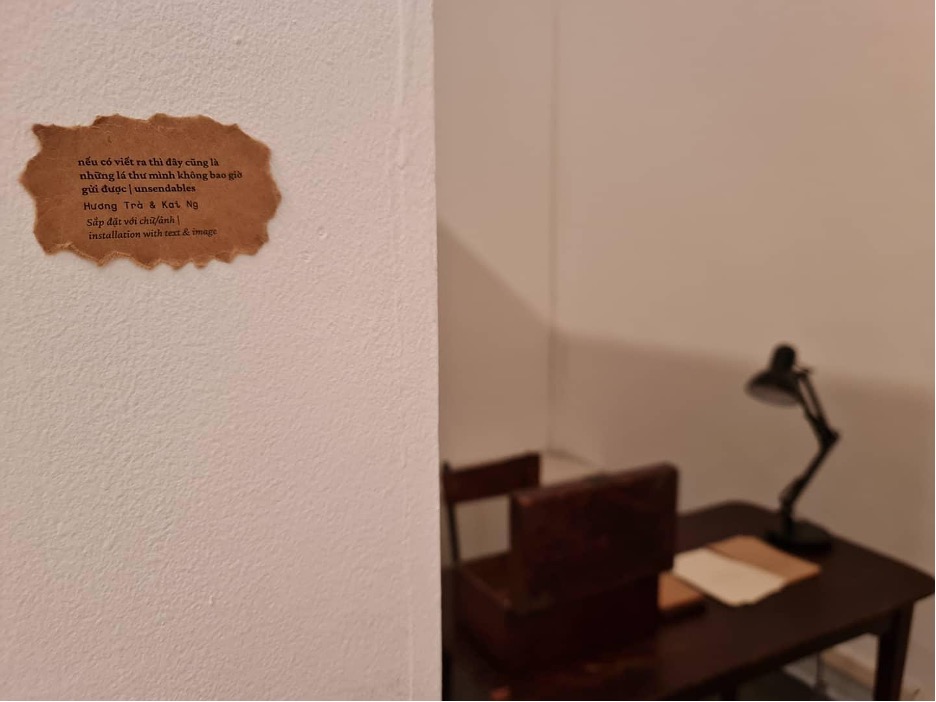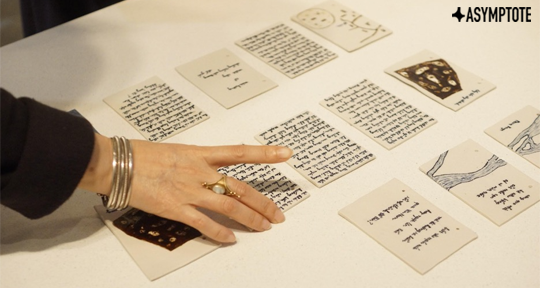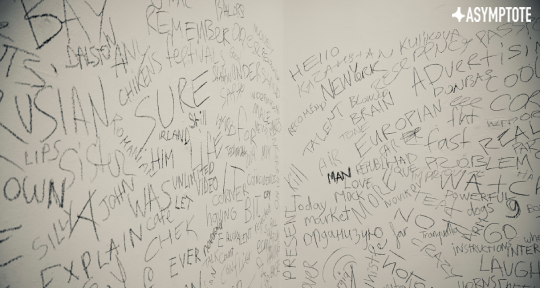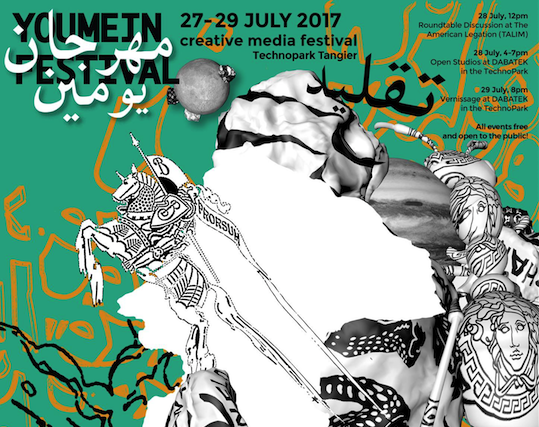In the multimedia exhibit, “i write (in Vietnamese),” held in Hanoi during March of 2021, a group of poets and artists grappled with the fraught nature of writing in Vietnamese through a series of multifaceted installations crossing between poetry, photography, and other forms of visual art. In this essay, the Vietnamese writer Phuong Anh reflects on the exhibit through conversations with the artists and their works to discover their relationship to the Vietnamese language, their experiences of living in multiple languages, and the significance of translation for both the artists and herself.
What does it mean to reside in a language?
What does it mean to write in a language?
These two questions dance around in my mind, as I pen down letters with diacritics, forming monosyllabic words, known to me as “Vietnamese.” Although every now and again, words from other places are inserted. They mingle together and ring in my ear like soft lullabies. Yet, when it comes to defining what language they are, what literature they are, no labels have yet to satisfy me.

“The unsendables,” Hương Trà & Kai, photograph by Bông Nguyễn
Such a dilemma is encapsulated in the title of the exhibition i write (in Vietnamese) that ran in March of 2021, right after the lift of Hanoi’s third lockdown. It took residence at first in the Goethe Institute before migrating to the Bluebird’s Nest Cafe. It was composed of a multimedia showroom, displaying the multifaceted nature of writing “in Vietnamese.” A label so constrained by past and current cultural politics, yet so liberating—a mini tug of war, echoed by the brackets, which both confine and protect the language.
The exhibition brings the creator and viewer closer to the process of art-making. For example, in Hương Trà and Kai’s project nếu có viết ra thì đây cũng là những lá thư mình không bao giờ gửi được | unsendables, viewers were invited to come, sit down, and write. In that room, there was a table on which there were two stacks of paper: one labelled “here are the letters that depart” and the other, “here are the letters that stay.” Those who chose the first stack could have their letters sent; while the writing of those who chose the latter “will never be able to be sent” and would remain forever with the exhibition. This project also connects languages not just through the bridge of translation but also by placing them within the same space: English and Vietnamese on one double-sided paper (chiếu| |uềihc reflect| |tcelfer), on a single page (where is my heart?; Journals to), or on the same line (slow dance in a burning room; skin.da). READ MORE…



